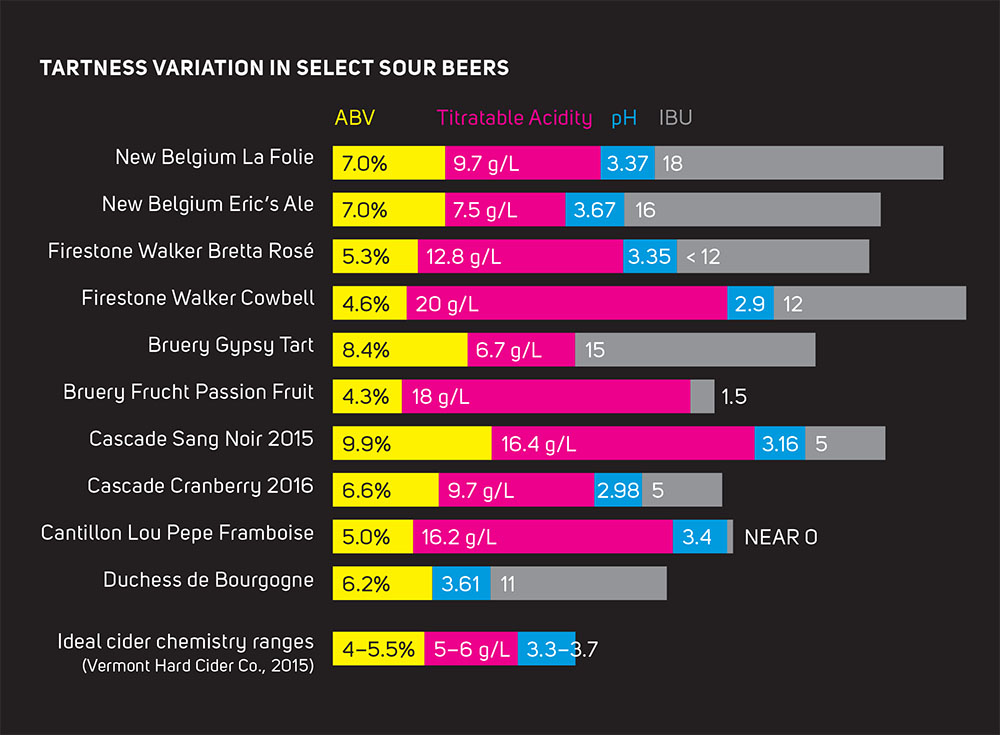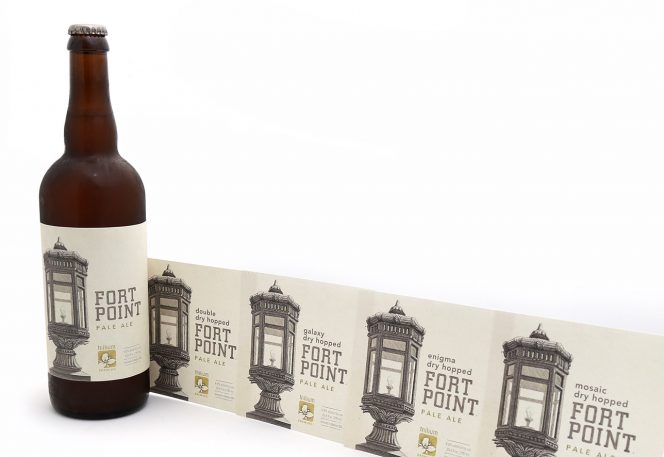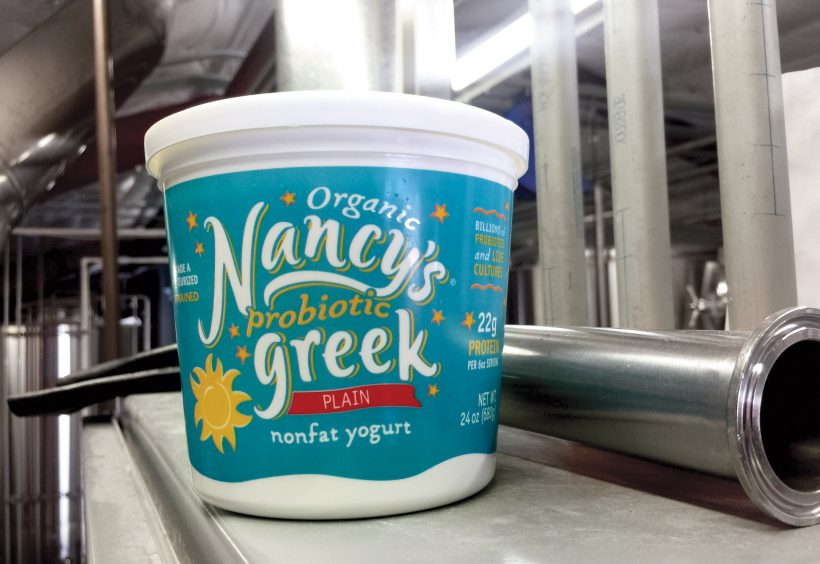 I didn’t necessarily pitch a story on the hardware store slash beer bar that started it all (y’know, the multitap hardware store craze!) to BeerAdvocate’s editor Ben, I just somehow mentioned it and he asked if I’d like to write it up for the mag. As if I ever need an excuse to head out to Cannon Beach on the Oregon coast and drink beer. There are now three breweries in the tiny town, but there’s only one spot you can get a cold pint and a toilet flapper. Behold, BeerAdvocate #123’s Barkeep: Screw & Brew.
I didn’t necessarily pitch a story on the hardware store slash beer bar that started it all (y’know, the multitap hardware store craze!) to BeerAdvocate’s editor Ben, I just somehow mentioned it and he asked if I’d like to write it up for the mag. As if I ever need an excuse to head out to Cannon Beach on the Oregon coast and drink beer. There are now three breweries in the tiny town, but there’s only one spot you can get a cold pint and a toilet flapper. Behold, BeerAdvocate #123’s Barkeep: Screw & Brew.
Category Archives: BeerAdvocate
Pioneering Greenville
There are Beer Meccas and there are cities not yet on the Beer Map. Greenville, SC, just an hour south of the Mecca of Asheville, NC, is the latter. Or at least it was. I’ve had the good fortune of replying to a press release here or there (I delete 95% within 2 seconds of opening them) that has led to some of my favorite travel-related stories. And while South Cackalacky is no Cabo San Lucas, I’m quite glad I allegedly penned the first beer travel story about this truly booming and deserving town for BeerAdvocate’s Destination feature. I hit 7 breweries. There’s at least 9 by the time you’re reading this.
Just how sour
Edit: This story was awarded 2nd place in the Technical Writing category at the 2017 North American Guild of Beer Writers (NAGBW) awards. While I’m extremely grateful to the judges, it’s humbling yet a li’l embarrassing that the estimable technical beer writer Randy Mosher placed 3rd for this cool story, “Hot Process: Exploring the role of heat in brewing” in All About Beer. Stan Heironymus took 1st place with his story on brewing with honey, also in AAB.
Remember Top Secret? Remember that great song in it, How Silly Can You Get? That’s how I think of a lot of beers. How alcoholic can you get? Brewmeister’s Snake Charmer has an ABV of 67.5% How bitter can you get? Flying Monkey’s Alpha-fornication packs 2,500 IBU. From OG/FG to SRM, brewers have a lot of measurements and acronyms to tell the consumer just how something something is. For sour heads, ours may come in the form of TA. Titratable Acidity. Firestone Walker Brewing isn’t the first to use TA in their lab, but they are the first to put how quantifiably sour their beer is right on the label of their funky Barrelworks offerings.
Now, a quick word about this story on Titratable Acidity just published in the November issue of BeerAdvocate: it’s crazy heavy on the chemistry-spiel, and I barely passed high school chemistry. I do this from time to time–I really challenge myself to wrap my head around a story. I had never heard the word “titratable” or “titration/titrating” before pitching this. I bludgeoned these poor master brewers, master blenders, and folks with Ph.D.s in food and brewing science with questions first so I could begin to understand what’s going on with the acidity in certain beers–specifically what types of acids are present and how they got there–and once I felt semi-comfortable with that, I had to write it up for the readers who didn’t have the same access I got. SO… if you think this story is “TL;DR” just imagine poor little me for whom it was nearly TL;DW. (And here I massively applaud my editor at BA, Ben Keene, for whom this must’ve been challenging to no end but did a masterful job, even if he originally assigned me 1,800 words, then caved and gave me 2,000, and somehow got it way, way down to 2,300!)
Is Pale Passé?
From BeerAdvocate #114:
In 1983, Sierra Nevada Pale Ale medaled at the Great American Beer Festival. Not in the Pale Ale category, mind you, but it was one of three beers singled out for honors in the Consumer Preference Poll. At the time, the beer was just three years old. Today, 33 years later, the brand remains the tippy-top selling craft brewed beer in America. Brian Grossman, 31, is Sierra Nevada co-founder Ken Grossman’s son and manages the company’s second brewing facility in Mills River, N.C. He proclaims that he absolutely drinks this beer every week. “[Pale Ales are] the Swiss army knives of beers,” he says. “They’re about 5 percent [alcohol], mid-30s IBU, have nice hoppiness, go great with a wide variety of foods, and are sessionable.”
According to Chicago-based market researcher firm IRI, Sierra Nevada Pale Ale is a $130 million juggernaut, but “Pale” has diversified and split off in hoppier, bolder directions. It has evolved past its original, caramel malt-driven British template. It has even morphed beyond the brasher, hop-centric American iterations. Name a brewery that opened between 1980 and the early 2000s though, and it most likely featured a Pale Ale prominently in its core line-up—even if that wasn’t the flagship brand.
And then India happened.
MSG: More Salty Goses

Bruery Terreux once made a gose with truffle salt. But this collab with Libertine uses ocean water. Photo by Brian Yaeger
Although bursting with a sour punch and finishing with a pinch of salinity, the once arcane Gose is not a margarita in beer form. Today, some iterations continue to hinge on the style’s tradition while others boldly bring it into the 21st century. As with many beer styles, brewers in the United States update them in distinctly American fashion. Ironically, for a nation of hop-loving beer drinkers salt is perceived as a flavor enhancer even though it suppresses bitterness. (Odds are, if your grandpa didn’t shake salt into his beer, some of his buddies did.) Which begs the question: will the building Gose wave—Nielsen reported that Gose revenue grew by 291 percent last year—win over palates with a tsunami of salt?
Barley, Hops, Water and…Yogurt?
Edit: This story was awarded 1st place in the “Short Form” category at the 2016 North American Guild of Beer Writers (NAGBW) awards.
From BeerAdvocate Magazine #103:
No one raises their eyebrows when black currants are used in a beer these days, but yogurt? To create the desired tartness and acidity in The Commons Brewery’s Biere Royale—a riff on the cassis-based Kir Royale cocktail—head brewer Sean Burke pitched tubs of the stuff. Specifically Nancy’s brand Greek yogurt. Burke is from Eugene, Ore., not far from the creamery’s location. Plus, it was in his fridge. Remarkably, the creation of that beer for the 2013 Portland Fruit Beer Festival is one the first uses of Lactobacillus found in unpasteurized yogurt to acidify beer. Instead of extensive aging in barrels inoculated with acid-producing bacteria, Burke went with a probiotic-rich dairy product.
“We knew we wanted to have a high amount of acidity,” said Burke at the time. “We took Nancy’s Greek yogurt and created a starter and soured in the kettle. Nancy’s has multiple strains of Lactobacillus… We mashed into the mash tun, lautered into the kettle, then soured the collected wort.”
New Wave Funk
BeerAdvcoate, the online forum turned magazine, doesn’t republish the print zine’s content online, but if you have #87, there’s my beer story on some of the next wave of funky brewers such as Cellarmaker (San Francisco), Side Project (St. Louis), J. Wakefield Brewing (Miami), and Crooked Stave (Denver), but being the contrarian that I am, I managed to make it center around one of the first to ride the wave, New Glarus’s Dan Carey. I also worked in some P-Funk, but that got cut out of the story, so I’ve taken the liberty of posting the first few grafs of the story below pre-edits:
The future of American sour beers started, in part, back in 1994 when New Glarus Brewing brewmaster Dan Carey developed a spontaneously fermented wild ale in the Flemish Oud Bruin style. He said it was probably a decade ago when he kegged some of that sour brown ale to the Great American Beer Festival. “I was particularly proud of this one and called it New Glarus Sour Brown Ale. But some people just wanted to try ‘the brown ale.’ One attendee in particular, whom I envision him doing a comical spit-take, exclaimed to Carey’s face, “Dude! This beer is spoiled; you have to take this off.”
I bet that same guy today brags about sampling said brown, since as P-Funk maestro George Clinton once said: “Just by getting a little taste of funk, you’re going to be hooked.” New Glarus, like Parliament Funkadelic, have always been ahead of their time.
Carey relayed his story of visiting the Belgian Trappist brewery, Orval, where brewmaster Jean-Marie Rock beseeched Cary, “Why do all of you American brewers copy me?” Arguably one of the greatest beers in the world could be described as simply a Belgian pale ale with an element of Brettanomyces, but there’s nothing simple about it. Unlike the brewers yeast that most breweries propagate, Saccharomyces cerevisiae, “Brett” is not so easily controlled and is a distinguishing character in many of the best Belgian brews beyond Orval including sour Flemish ales and Lambics. Rock continued, “Why don’t you make your own beers?” New Glarus has always excelled at doing just that, making their own beers, and Carey shared some thoughts on the notion of American breweries doing telltale, Belgian-style beers. “Our technology, temperament, and terroir are different. Frankly, if you were going hire a band for an event, if you could afford it you’d prefer to pay a band that plays original music and not a cover band. Rodenbach already exists,” said Carey referencing the notorious Flemish brewery. “Every musician is inspired, but I’m not a cover band.” Call his sour, frequently-fruited beers “lambic style” if you must, but Carey fervently calls them “American sour ales.”
Class of 2013: Ecliptic
BeerAdvcoate, the online forum turned magazine, doesn’t republish the print zine’s content online, but if you have #84, there’s a story on some of the best of the Class of 2013 for which I contributed the following blurb on Ecliptic (Portland) and De Garde (Tillamook):
Ecliptic Brewing
825 N. Cook St., Portland, OR 97227; EclipticBrewing.com
Oregon brewing legend John Harris got his professional start at McMenamins, the first brewpub in Oregon, in 1985. Then a brewpub in Bend opened called Deschutes, where Harris created Black Butte Porter and Mirror Pond Pale Ale in 1988. Up next: Full Sail in Hood River where he became a co-owner. His stellar (or interstellar) new creation is Ecliptic, a 15-barrel brewpub named for our astral and perhaps his occupational journey around the sun. “No other brewery’s name is based on astronomy,” said amateur astronomer Harris, who didn’t stop there. “We will be naming beers after stars, nebula, galaxies, and other astronomical themes.” Arcturus is an orange giant some 36.7 light years away but it’s also Ecliptic’s first IPA exploding like a supernova of C-hops (Cascade, Centennial, Chinook, and Columbus). It’s a given that the celestial sphere and earthly beer are both heavenly, but for this veteran brewmaster, they hold much in common. “Creating a new beer is a cosmic thing, really” said Harris. “(You’re) combining ingredients and bringing it to life.”
De Garde Brewing
1909 2nd St., Tillamook, OR 97141; twitter.com/DeGardeBrewing
Brewer Trevor Rogers is keenly aware that the fan base for his beers is primarily Portland beer geeks, not locals in coastal Tillamook…yet. De Garde is making waves with their Belgianesque beers starting with the infinitely sessionable Bu Weisse. (The name is both a nod to the Morrocan word for “my” and owner Linsey Hamacher’s cat, although Rogers successfully proposed to Hamacher at De Garde’s debut so Bu is their cat). It’s a 2.1% tart ale akin to a Berliner Weisse. From there, Rogers goes in every direction including Chanin Blanc Regards, a Double IPA with wild yeast, wine grapes, and finished in gin barrels. But while this wine-loving brewer makes ample use of fruit, ultimately Trevor said, “I just try to get out of the way of the yeast. I wanna let wild ale be wild.”
Beer Destination: San Francisco
BeerAdvcoate, the online forum turned magazine, doesn’t republish the print zine’s content online, but if you have #73, there’s my beer travel story on one of the best beer towns in the world: San Francisco. After the lede, below, I devised an itinerary that stops at musts like the legendary Toronado as well as more intimate nooks like Fat Angel.
Anchor Brewing Co., established in 1896, transformed into America’s original craft brewery in 1965 when Fritz rescued and renovated it, thereby making the SF Bay Area the epicenter of the beer renaissance. Maytag was even ahead of the real food movement, pioneered by Alice Waters who opened groundbreaking Chez Panisse across the bay in Berkeley in 1971.Today, the Bay Area is home to over sixty breweries, and The City itself boasts nine beyond Anchor…and growing. In fact, the SF Brewers Guild decided to bring the contract and gypsy breweries into the fold so now membership stands at fifteen.





